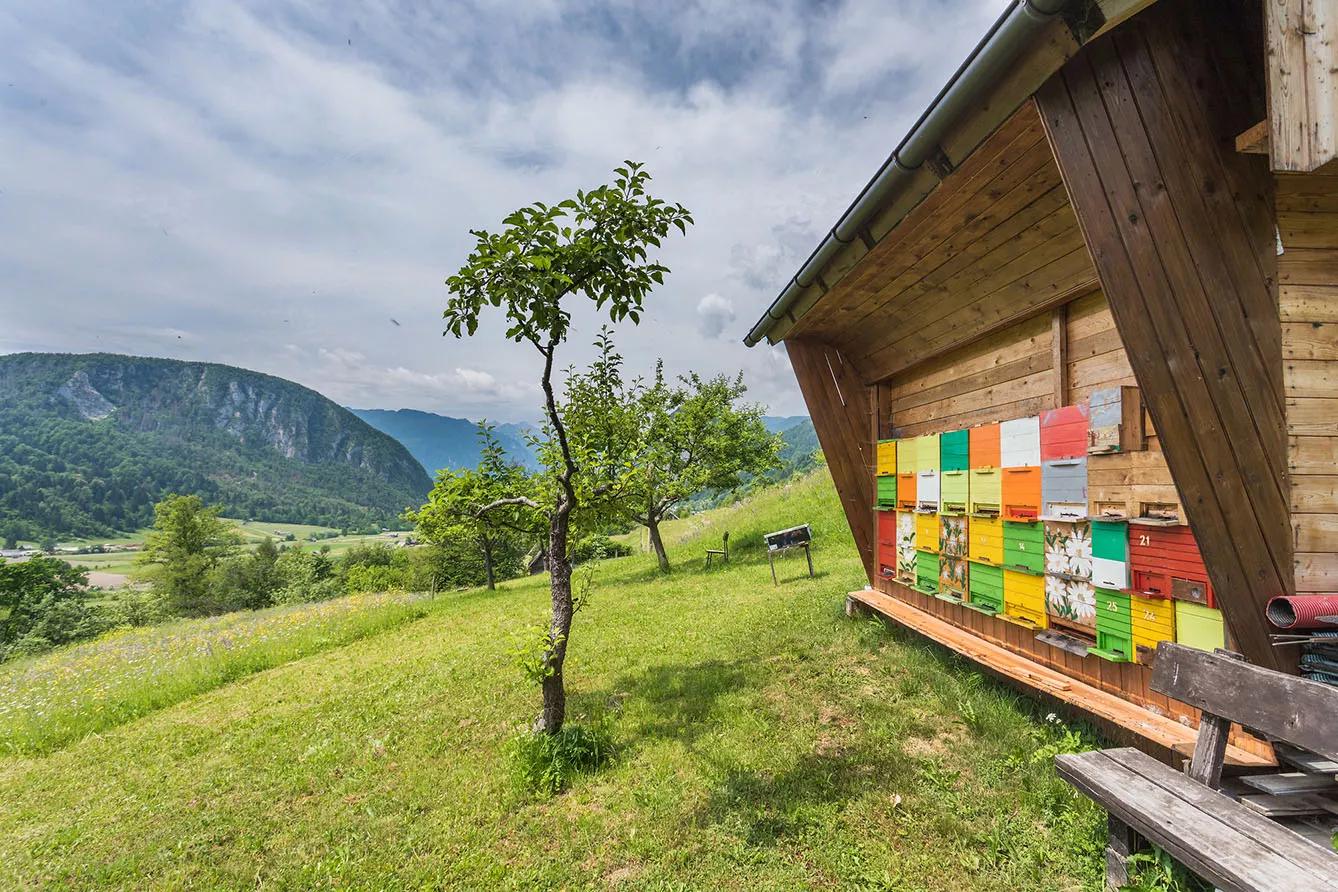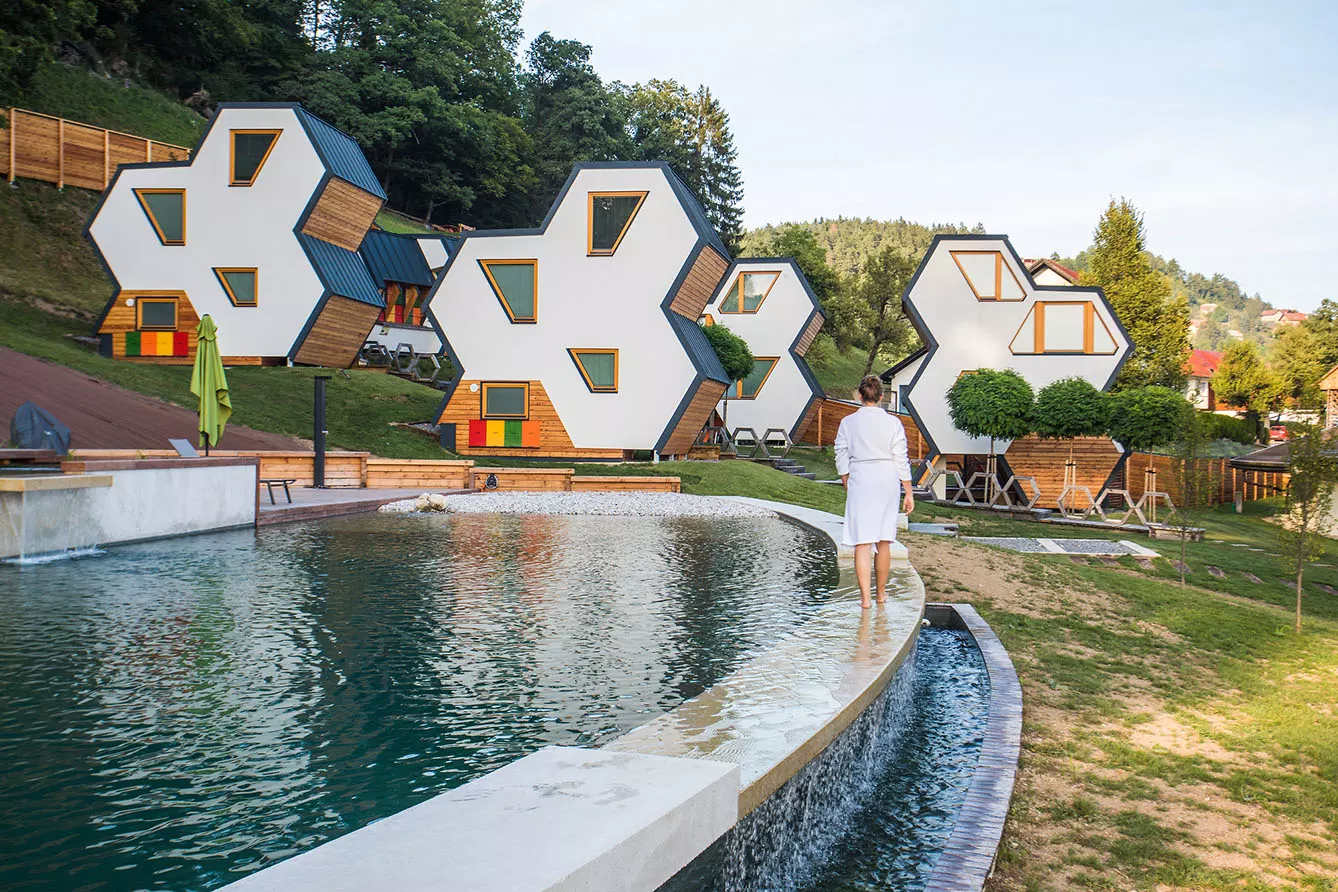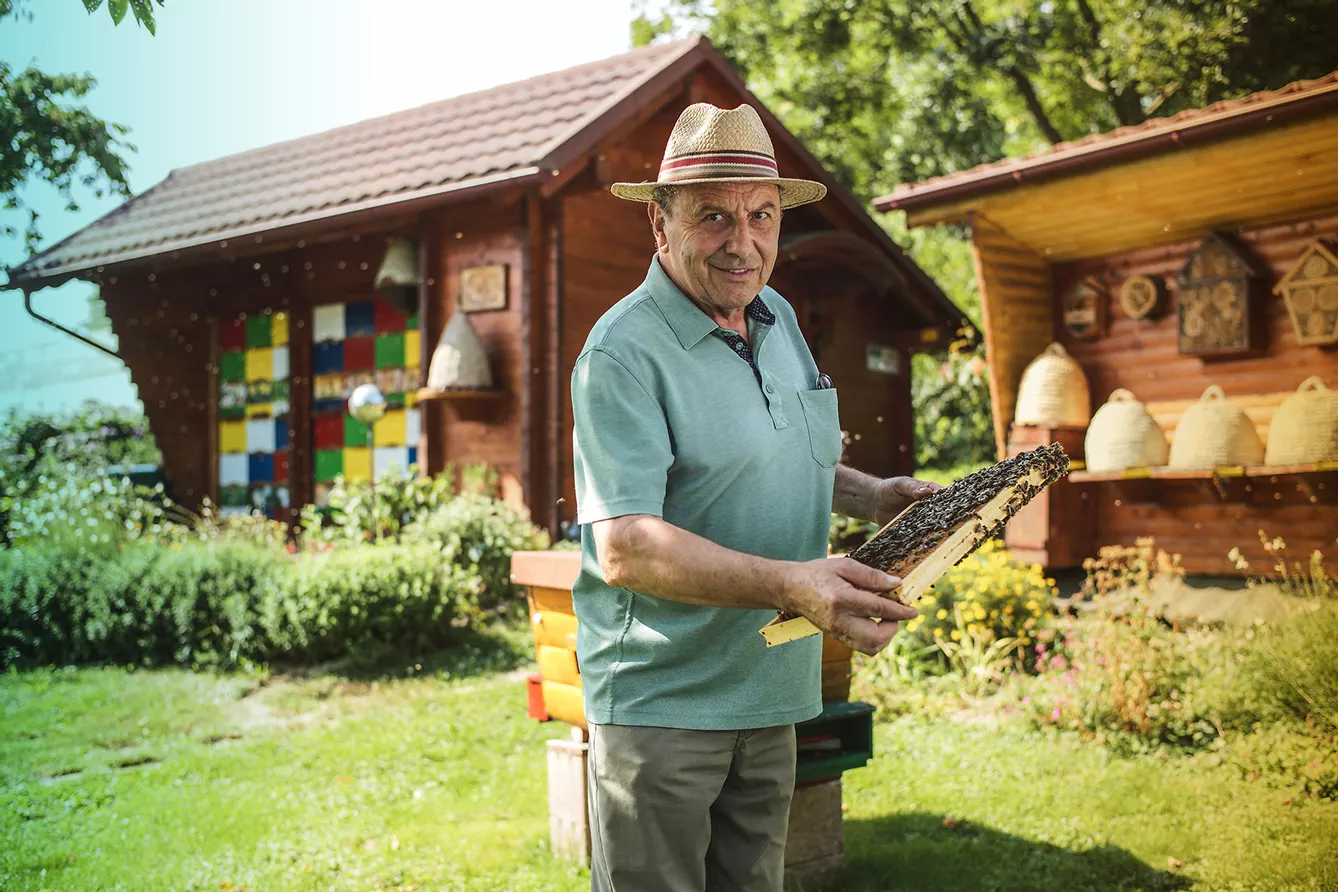In Slovenia, honey and other bee products are widely used in Slovenian national cuisine, in apitherapy (which comes from the 19th-century Maribor doctor and beekeeper of Czech origin, Dr. Filip Terč, who tested the use of a bee sting as a cure for rheumatism), and in the wellness industry. It is also the country that founded World Bee Day, declared in 2017, which is celebrated on 20 May in honor of the birthday of the pioneer of modern beekeeping – Anton Janša. He was the first beekeeper to revolutionize the profession as well as a teacher at the court of the Habsburg Empress Maria Theresa.



Busy as a bee(keeper)
Slovenia is the only European country where beekeeping is allowed only with indigenous Carniolan bees (apis mellifera carnica). Slovenes say that they have unique qualities, such as diligence, humility, and an excellent sense of orientation. Just like their breeders! And there are quite a few of them here. In fact, Slovenia has the largest number of beekeepers per capita in the world.
It is said that authentic Slovenian honey comes exclusively from “Kranja Sivka,” the original Slovenian bumblebee. Each region of this small country, incredibly diverse in terms of landscape and climate, has its own type of honey. Two of the most special delicacies are forest and chestnut honey. Increasingly, hives are an integral element of urban architecture, built on the roofs of houses.
Sleeping with the bees
Bees and their work are so highly valued and celebrated throughout the country that even the youngest children learn about the immense role of bees as crucial pollinators. In professional institutes, museums, and workshops of various kinds, love and respect for these insects are instilled, and participants are encouraged to cultivate the tradition.
You can even feel like a bee during a special bee flight on a zipline in Maribor. You can also spend a night… in a hive. More specifically, in apartments inspired by apiary architecture, which is more and more often found in specialized agritourism sites. To better understand the bee phenomenon, there are places where one can listen to the bees or feel them buzzing by lying on top of a hive (in a controlled setting, of course).
Beekeeper hieroglyphs
Slovenian apiaries – called AŽ hives (after their inventor Anton Žnideršič), are very characteristic and hard to be confused with other styles in the world. They are truly luxurious apartments (often on wheels) with multi-colored, hand-decorated fronts (the so-called panjske končnice). They are true works of folk art – you can read the region’s history from them, more or less like from Egyptian hieroglyphs. The paintings also usually contain symbols to protect bees from evil forces.
Honeybees have always been treated as friends and good spirits watching over the families of their keepers. Some even consult with bees about important events, taking their predictions very seriously. To this day, a common saying in Slovenia is that “the ax fell into the honey” (Slovenian: “sekrica v med”) to describe a sudden surge of luck.







